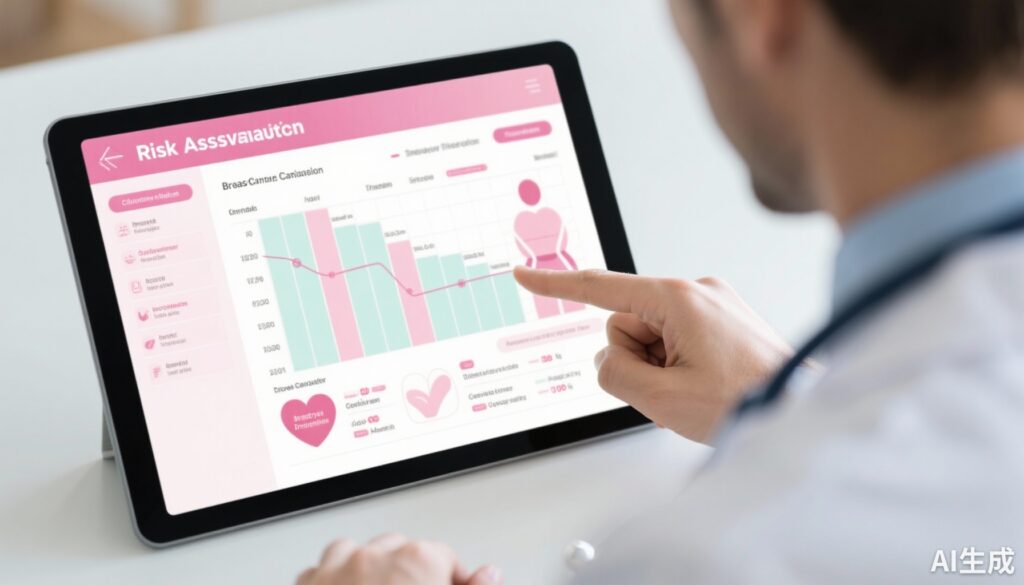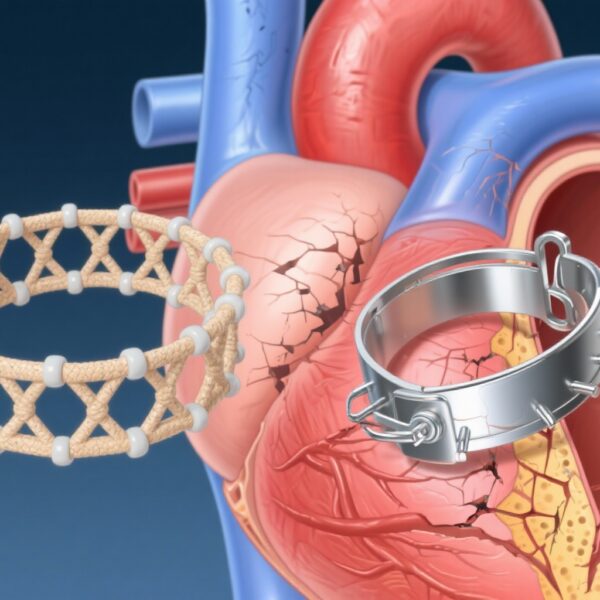Introduction
The intersection of oncology and cardiology, known as cardio-oncology, has gained increasing attention due to the rising survivorship among women treated for breast cancer (BC). While advancements in systemic therapies have significantly improved breast cancer outcomes, these treatments are associated with cardiotoxic effects that can lead to heart failure (HF) or cardiomyopathy (CM). Despite the clinical significance, there remains a critical need for effective methods to identify women at high risk for these adverse cardiac events to enable timely interventions.
This strong clinical imperative drove the development of a comprehensive risk prediction model aimed at estimating the 10-year probability of HF/CM following breast cancer treatment. By integrating patient demographics, tumor characteristics, treatment regimens, and comorbidities, this model seeks to facilitate personalized cardiac risk management in women receiving systemic therapy for early-stage breast cancer.
Background and Disease Burden
Breast cancer remains the most common malignancy among women worldwide, with significant improvements in survival due in part to advances in systemic therapies such as anthracyclines, trastuzumab, and newer targeted agents. However, these therapies are known to have cardiotoxic potential, increasing the risk of HF and CM, which can adversely impact quality of life and survival.
Current guidelines lack standardized tools to stratify cardiac risk at the individual level, often leading to either over- or under-surveillance. The heterogeneity of patient characteristics and treatment protocols complicates risk assessment, underscoring the need for validated predictive models that incorporate these variables.
Study Design and Methods
This longitudinal cohort study utilized data from Kaiser Permanente Southern California, an integrated healthcare system with extensive clinical and administrative records. The cohort included 26,044 women aged 18-79 years, newly diagnosed with invasive early-stage breast cancer between 2008 and 2020.
Patients were followed for a median of 5.2 years to ascertain incident HF/CM events. The study employed multivariable elastic-net Cox proportional hazards models to develop the risk prediction model, which was then validated internally. The cohort was randomly split into derivation (60%) and validation (40%) sets to assess model performance.
The predictors integrated into the model encompassed age at diagnosis, race and ethnicity, socioeconomic status, tumor stage, detailed treatment regimens (including chemotherapy, trastuzumab, radiation), obesity, hypertension, diabetes, hyperlipidemia, smoking status, and previous cardiovascular conditions.
Key Findings and Results
The median age of the cohort was 61 years. During follow-up, a subset developed HF/CM, with incidence rates varying across risk groups. The developed model demonstrated excellent calibration and discrimination abilities. In the validation cohort, the predicted 10-year risk matched observed rates within narrow confidence intervals.
Low-risk women had an estimated 1.7% (95% CI, 1.1% – 2.4%) chance of developing HF/CM, while high-risk women faced an estimated 19.4% (95% CI, 17.3% – 21.5%). The model’s time-dependent area under the curve at 10 years was 0.79, indicating good predictive accuracy.
Notably, key predictors of increased risk included age, exposure to anthracyclines and trastuzumab, pre-existing hypertension, and obesity—parameters readily available at diagnosis, facilitating early risk stratification.
Expert Commentary and Implications
This validated risk model marks a significant advancement in personalized cardio-oncology. It can inform clinical decision-making, such as intensified cardiac monitoring or prophylactic interventions for women identified at high risk. The model’s reliance on routinely collected clinical data enhances its feasibility for widespread clinical application.
Limitations include the need for external validation across diverse populations and the potential impact of unmeasured confounders. Future research should explore integrating novel biomarkers or imaging findings to further refine risk predictions.
Clinicians should consider this tool as part of a comprehensive approach, balancing the benefits of cancer therapies with cardiovascular safety, ultimately aiming to improve long-term outcomes for women with breast cancer.
Conclusion
The development of this 10-year HF/CM risk prediction model provides a practical, validated instrument for clinicians managing women with early-stage breast cancer. By enabling risk-guided cardiac surveillance and intervention, it has the potential to mitigate treatment-related cardiotoxicity and enhance survivorship quality.
This initiative exemplifies the progress toward precision medicine in oncology and cardiology, emphasizing the importance of integrating diverse data sources to optimize patient care.
Funding and Registrations
[Details to be added as per study disclosures]
References
– Barac A, Chou J, Shara N, et al. Risk Prediction Model for Development of Heart Failure or Cardiomyopathy After Breast Cancer Treatment. JAMA Oncol. 2025;10.1001/jamaoncol.2025.4178.
– Additional references to be included upon publication in peer-reviewed journals.



